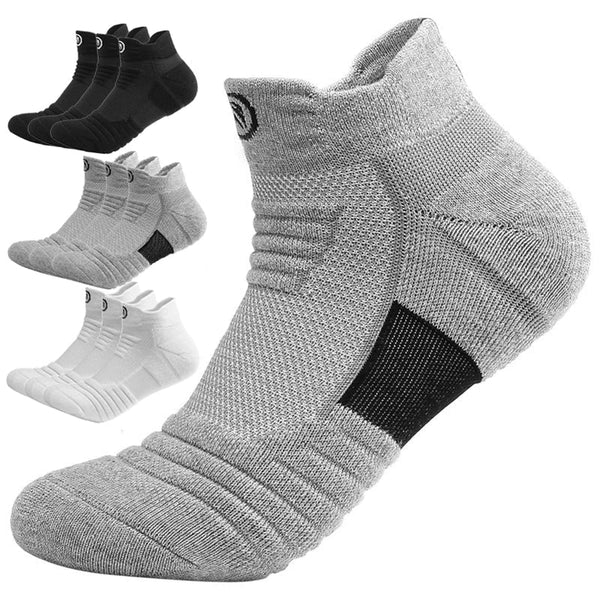
The Ultimate Guide to Choosing the Perfect Men’s Sports Socks for Comfort & Performance
Share
Introduction: Why Socks Matter More Than You Think
When it comes to sportswear, we often focus on the big items—shoes, jerseys, shorts. But there’s one piece of gear that’s often overlooked, yet has a massive impact on your comfort and performance: socks. The right pair of socks can make the difference between blistered feet and effortless movement, between fatigue and sustained energy.
Think about it: your feet endure hours of pressure, friction, and sweat during physical activities. Without the right socks, you’re not only risking discomfort—you could be harming your long-term foot health. That’s why choosing the perfect men’s sports socks is an investment in both comfort and performance.
The Science Behind Good Sports Socks
The best sports socks aren’t just pieces of fabric; they’re engineered for performance. High-quality socks are designed with:
- Cushioned soles for shock absorption
- Moisture-wicking fibers to keep your feet dry
- Compression zones to support muscles and reduce fatigue
- Breathable mesh for ventilation
Every stitch serves a purpose, ensuring your feet stay supported, dry, and comfortable even during intense workouts.
Benefits of Compression & Cushioning
Sports socks often use targeted compression to improve blood circulation, reduce swelling, and speed up recovery. This is especially important for runners, basketball players, and cyclists who push their legs to the limit.
Cushioning, on the other hand, protects your feet from hard impacts. Whether you’re sprinting on a track or landing after a jump shot, extra padding at the heel and forefoot absorbs shock, preventing strain and injury.
Breathability & Moisture-Wicking Technology
Sweaty feet aren’t just uncomfortable—they can lead to blisters, odor, and fungal infections. That’s where moisture-wicking socks come in.
These socks use advanced fabrics like polyester blends, CoolMax®, or merino wool to pull sweat away from your skin. The breathable mesh zones allow heat to escape, keeping your feet cool and fresh no matter how intense your workout gets.
How to Choose Socks for Different Sports
Different sports demand different types of socks:
- Running: Look for lightweight, moisture-wicking socks with extra arch support.
- Basketball: Opt for thicker socks with high ankle coverage for stability.
- Cycling: Choose snug-fitting, breathable socks with minimal bulk.
- Gym/Training: Mid-weight socks with compression zones to support heavy lifting and agility training.
Why Fit and Elasticity Matter for Foot Health
Too tight, and you cut off circulation. Too loose, and you risk blisters from friction. The perfect sports socks hug your foot comfortably without slipping down. Look for socks with a blend of elastic fibers like spandex for a secure fit.
Common Sock Mistakes to Avoid
- Wearing cotton socks for sports (they trap moisture)
- Using worn-out socks with no cushioning left
- Choosing the wrong thickness for your sport
- Ignoring odor-control properties
Why These Socks Are the Game-Changer You Need
Our men’s sports socks check all the boxes:
- High-density cushioning for all-day comfort
- Breathable mesh to keep feet dry
- Arch compression for better stability
- Durable fibers to withstand intense training
They’re not just socks—they’re your feet’s best defense against fatigue and discomfort.
Conclusion: Step Into Comfort Every Day
Your feet carry you through every sprint, jump, and pedal stroke. Investing in high-quality sports socks isn’t a luxury—it’s essential. Once you experience the difference, you’ll never go back to regular socks again.
FAQs
Q1: Can I wear sports socks for everyday use?
Absolutely! Sports socks offer better comfort and support for daily wear compared to regular socks.
Q2: How often should I replace my sports socks?
Every 6–12 months, depending on frequency of use and washing.
Q3: Can sports socks prevent blisters?
Yes, high-quality sports socks reduce friction and keep your feet dry, lowering blister risk.
Q4: Are compression socks the same as sports socks?
Not exactly—compression socks focus more on circulation, while sports socks balance performance, cushioning, and breathability.
